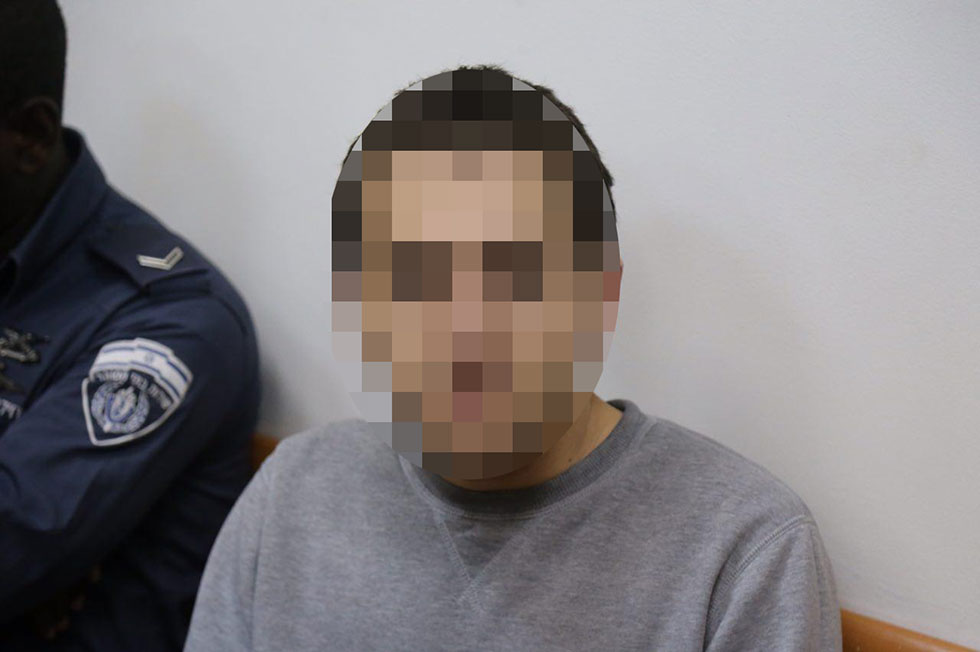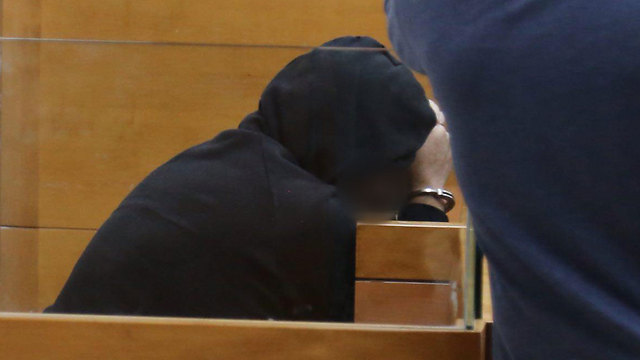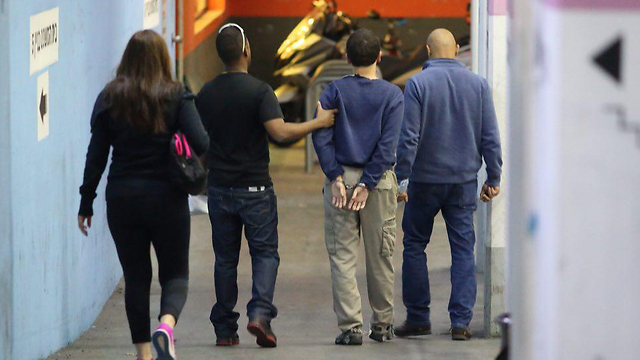

Indictment against bomb threat suspect reveals full extent of his crimes
Charges against the 18-year-old Israeli-American national include 142 bomb threats against airlines, about 2,000 threats of terrorism and violence against institutions around the world, 2 threats against US officials and even offering his services for money.
The indictment against an 18-year-old Israeli-American national suspected of making bomb threats against flights, institutions and extorting a US state senator, which was filed on Monday, revealed the full extent of his crimes.
The indictment details 142 different cases of bomb threats against passenger planes, some 2,000 different cases of terrorism threats against private, public and government institutions, and two cases of threats, extortion and attempted incrimination of US officials, all the while using advance technological methods to hide his identity.
Bomb threats against flights
The first case was on June 29, 2015. The suspect called airfields in Kincardine, Ontario and Regina, Saskatchewan in Canada, claiming that bombs were planted on two WestJet flights. A plane on its way to Edmonton was diverted to a different airfield and made an emergency landing, with 150 passengers on board immediately evacuated.At the same time, another plane on its way to Toronto was diverted to an airfield in Manitoba and the crew decided to evacuate all passengers using slides. Six passengers were injured in the evacuation, with some requiring medical treatment and taken to a nearby hospital.
Since that day, the threats continued ceaselessly, even causing some major panic in some instances.
These are some of threats the suspect made against flights:
July 4, 2015: Bomb threat on Southwest Airlines flight from Baltimore to Denver.
July 6, 2015: Bomb threat on American Airlines flight from Orlando to Minneapolis.
July 7, 2015: Bomb threat on Southwest Airlines flight from Baltimore to Rhode Island.
July 7, 2015: Bomb threat on American Airlines flight from Chicago to Dallas.
July 20, 2015: Bomb threat bomber on American Airlines flight from Los Angeles to Miami.
October 13, 2015: Bomb threat on American Airlines flight from Miami to New York.
November 18, 2015: Bomb threat on Air France flight from Washington to France.
December 7, 2015: Bomb threat on Air France flight from San Francisco to Paris.
February 17, 2016: Bomb threat on Virgin Australia Airlines flight from Sydney to Los Angeles.
June 2, 2016: Bomb planted by ISIS terrorist on British Airways flight from London to Newark, demanding $50,000 for its deactivation.
July 4, 2016: Bomb threat on American Airlines flight from London to Chicago.
July 5, 2016: Bomb threat on El Al flight from New York to Israel, which caused the French and Swiss air forces to launch fighter jets to escort the plane during its flight in their airspace, ready to shoot it down should it pose any threat to residents on the ground.
July 22, 2016: Bomb threat on Delta Air Lines flight from New York to Miami.
July 27, 2016: Bomb threat on United Airlines flight from Newark to Seattle.
August 3, 2016: Bomb threat on WestJet flight from Vancouver to Ottawa.
December 11, 2016: Bomb threat on Delta Air Lines flight from Biddeford to Oklahoma City, which caused the evacuation of Boston Celtics NBA players who were on their way to a game in Oklahoma.
December 13, 2016: Bomb threat on Lufthansa flight from Houston to Frankfurt.
January 31, 2017: Bomb threat on American Airlines flight from Charlotte to Indianapolis.
February 17, 2017: Bomb threat on United Airlines flight from Orlando to New Jersey.
Apart from these 21 bomb threat calls, the suspect also called 121 additional airlines, airfields and police stations, claiming he planted bombs on different flights.
Bomb threats against institutions
Still, the majority of the bomb threats allegedly made by the young man from Ashkelon were against institutions; some 2,000 calls to schools, malls, police stations, hospitals, Jewish community centers, public institutes and more were made claiming that terrorist attacks and murders were set to occur within their facilities.During those calls, the suspect would usually tell his victims that they don't have much time, as the attack—whatever it was—was planned to happen shortly, and that many are about to get hurt.
Those threats started in April 2015, when he called schools in California and Arizona, threatening to open fire on the students.
Though most of his threats were against US institutions, some were against institutions in Canada, Australia, New Zealand, Britain, Denmark and several others, including Israel, where he called to threaten the Ice Mall in Eilat, the Grand Canyon Mall in Haifa, an elementary school in Ganei Tikva and several other facilities.
Making a business in threats
According to the indictment, the suspect made his threats into a business, posting an ad for his services on the AlphaBay website, which is used for anonymous electronic trade on the Darknet.He priced his intimidation business, charging $40 for threatening a private home, $80 for a threat against a school, $50 for a bomb threat on an airplane, and even offered discount prices for mail threats, such as $30 for an email threat against a school.
In addition, the suspect offered his clients the option to make special requests, telling them that he would send them a price estimate for it.
The suspect even had quality assurance, for example clarifying that a threat against a school would only be considered successful and be charged for if security forces are called and the school is evacuated.
His business landed him roughly NIS 873,000 ($225,000) in Bitcoins, and at one point he employed two other individuals to operate as subcontractors, carrying out his tasks.
Child pornography was also found on his computer, though it is not clear whether it was for the purpose of incriminating his targets or for the suspect's own use.
Extorting US officials
On July 9, the suspect called George E. Little, a former Assistant to the US Secretary of Defense for Public Affairs, twice, claiming he had information on his attempt to murder children and his illegal stash of explosives.The same day, the suspect called Washington Police and, using a voice changer, claimed he was Little's wife, saying Little is planning to murder children.
A week later, the suspect harassed Little again, calling him "a dead man" and trying to get him arrested.
Over the past two years, the suspect called police stations 48 times, threatening the officers and falsely claiming that he is holding their children or relatives hostage.
In January 2016, a Republican member of the Delaware Senate Ernesto Lopez denounced the suspect's actions. Following that, the suspect—together with another person that has not been identified—tried to blackmail the senator, demanding that he take back his comments.
After the politician did not accede to his demands, the suspect allegedly purchased drugs over the Darknet, sending the drugs to the senator's home.
The suspect then gave his accomplice the senator's details, including his name, address, phone numbers and the names of his family members. In September 2016, the accomplice called the senator, demanding him to pay some $1,100 in Bitcoin, threatening to murder the senator's daughter, Claire.
The evidence
During his police questioning, the suspect admitted to all of the allegations attributed to him, even admitting that he mediated drug trades and the selling of written guides used to commit felonies. In his last questioning session, the suspect changed his mind and stopped cooperating with investigators.Much evidence was found on his computer, which was seized from his room, among them recordings of the threats, as well as news articles about the threats and the panic they caused.
His parents asked for him to receive professional treatment, saying that their son is not a criminal but mentally ill.
The suspect's attorney issued a statement on the indictment, saying, "An indictment was issued in Juvenile Court, in accordance with claims by the prosecution that a portion of the crimes were committed (when the suspect) was a minor. This is not a classic criminal who wants to cause havoc, but rather, a sick offender."
According to Yoni Hadad, an attorney in the cyber department of Israel's State Attorney's Office, "The indictment details more than 2,000 threatening conversations to different countries, airline companies, schools and hospitals all using sophisticated means to conceal his identity. Additionally, he was active on the Dark Net.
"As far as the State Prosecutor is concerned, claims regarding the suspect's personal and medical situation do not protect him from incarceration until the end of proceedings," Hadad said.
(Translated & edited by Lior Mor)



















